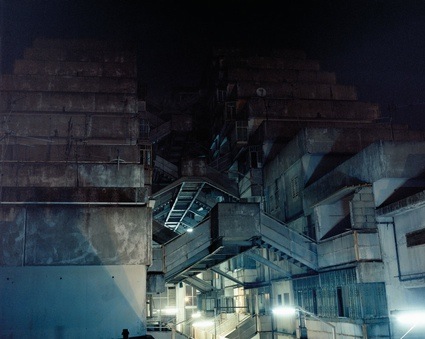 Tobias Zielony, Stairs, 2009-2010
Tobias Zielony, Stairs, 2009-2010
If you’ve seen the movie Gomorrah, you won’t have any difficulty recognizing the location of Tobias Zielony’s photos: Le Vele (The Sails) in Naples. Denatured by modifications to the original plans, obstructed by management failures, excessive housing density and insufficient services facilities, the monumental buildings are to be demolished. Three of them have already been razed to the ground. The remaining four “sails” are in an advanced state of degradation. Only about a hundred families still live in buildings which have now been reduced to ghostlike ruins (via.)
Zielony, whose images i discovered at the Artissima art fair 2 months ago, spent several weeks studying and documenting how adolescents “kill time” in Naples suburbia.
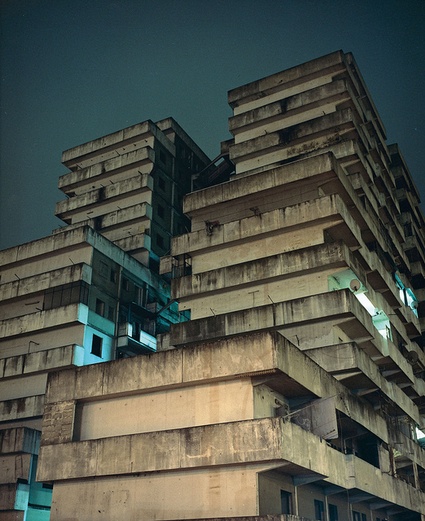 Tobias Zielony, Vela azzurra, 2009-2010. Galeria Lia Rumma, Napoli
Tobias Zielony, Vela azzurra, 2009-2010. Galeria Lia Rumma, Napoli
Trailer of Gomorrah. Le Vele start appearing at 0:34. Btw, did the voice over need to be so tragico-ridiculous?
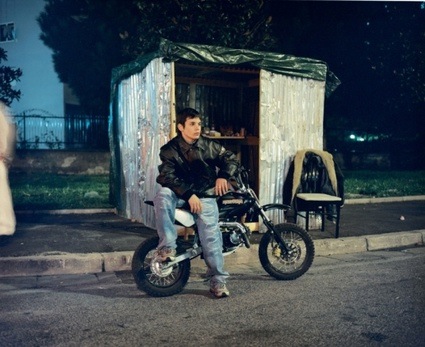 Tobias Zielony, Mini-Bike, 2010
Tobias Zielony, Mini-Bike, 2010
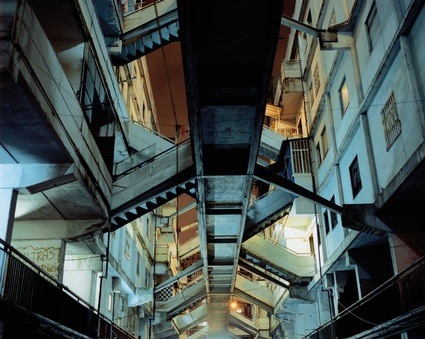 Tobias Zielony, Structure, 2010
Tobias Zielony, Structure, 2010
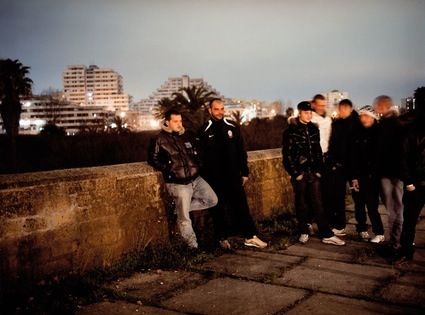 Tobias Zielony, The group, 2010
Tobias Zielony, The group, 2010
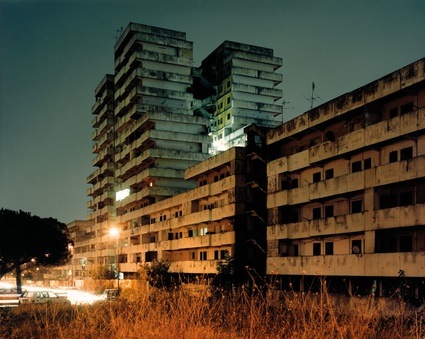 Tobias Zielony, Vela Rossa, 2010
Tobias Zielony, Vela Rossa, 2010
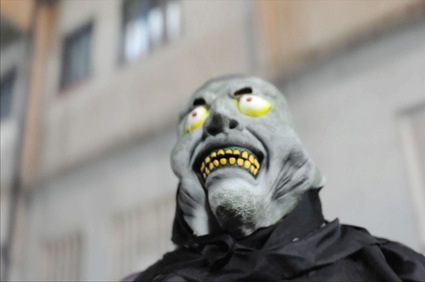 Tobias Zielony, Le vele di Scampia, 2009
Tobias Zielony, Le vele di Scampia, 2009
Let’s not move away from the ‘deteriorating architectural heritage’ chapter immediately, shall we? This morning i read in The Guardian that UK’s largest surviving estate of postwar prefab houses is set to be bulldozed. Only six of the 187 bungalows, erected from factory-built panels by German and Italian prisoners of war in 1945 and 1946, will be saved. The remainder of the Excalibur estate in Catford, south-east London, will be demolished, along with its tin-roofed prefab church, St Mark’s.*
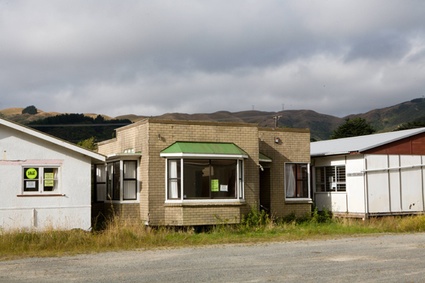 Lara Almarcegui, Relocated Houses, Brittons Yard, 2009. Courtesy Ellen de Bruijne Projects
Lara Almarcegui, Relocated Houses, Brittons Yard, 2009. Courtesy Ellen de Bruijne Projects
The story brought back to my mind another project i noticed at the Artissima art fair in November. Over a year ago, artists Lara Almarcegui came across a patchy assortment of cottages, classrooms and villas on the outskirts of Wellington, New Zealand. The houses are moved there from different places and remain on display until they are sold. The result is a ghost-town like street with empty buildings, some in state of disrepair, others in almost pristine condition.
For the One Day Sculpture project, Almarcegui traced the roots and individual stories of each building and communicated it through a tour and a catalogue which was published as an insert in Wellington’s daily newspaper, the Dominion Post.
Caught between a distant history shared with an almost forgotten owner and their future reinstatement to another site, each house seems to be out of context.
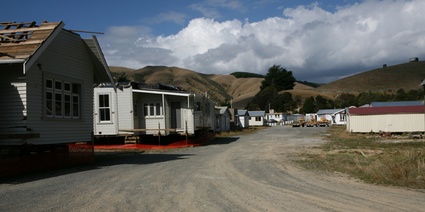 Lara Almarcegui, Relocated Houses, Brittons Yard, 2009. Courtesy Ellen de Bruijne Projects
Lara Almarcegui, Relocated Houses, Brittons Yard, 2009. Courtesy Ellen de Bruijne Projects
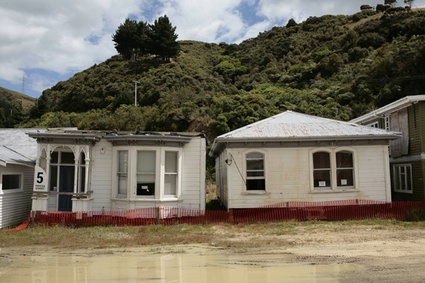 Lara Almarcegui, Relocated Houses, Brittons Yard, 2009. Courtesy Ellen de Bruijne Projects
Lara Almarcegui, Relocated Houses, Brittons Yard, 2009. Courtesy Ellen de Bruijne Projects
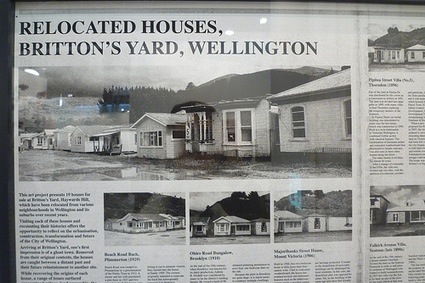 Lara Almarcegui, Relocated Houses, Brittons Yard, 2009
Lara Almarcegui, Relocated Houses, Brittons Yard, 2009
There might not have been as many photographic works as in the previous editions of Artissima, but the ones i saw certainly made it worth the trip.
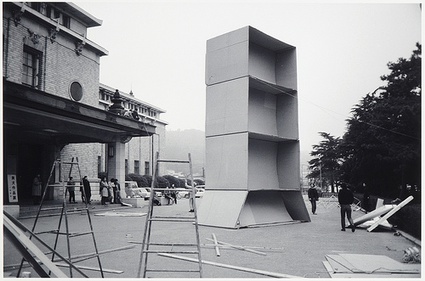 Hitoshi Nomura, Tardiology, 1968-1969
Hitoshi Nomura, Tardiology, 1968-1969
Thank you McCaffrey Fine Art for bringing Hitoshi Nomura to the art fair. Nomura gained fame in the late sixties with huge works created out of cardboard or dry ice, that he photographed to record their change in shape and aspect over time, thereby manifesting invisible concepts, such as ‘gravity’ or ‘time’. For his Tardiology series (1969/2009), the artist constructed high cardboard towers that he then left to the mercy of gravity, time and weather. He photographed them as they started to sag, bend, and finally toppled. Simple and effective demonstration of the power of gravity over time.
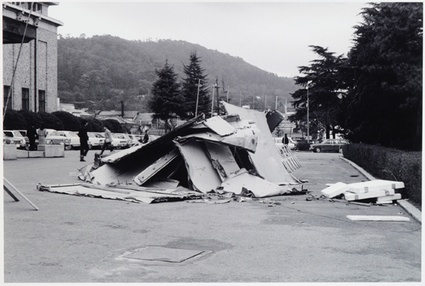 Hitoshi Nomura, Tardiology, 1968-1969
Hitoshi Nomura, Tardiology, 1968-1969
* Nothing to see here points to a lovely PDF about post-war prefabs in the UK.
